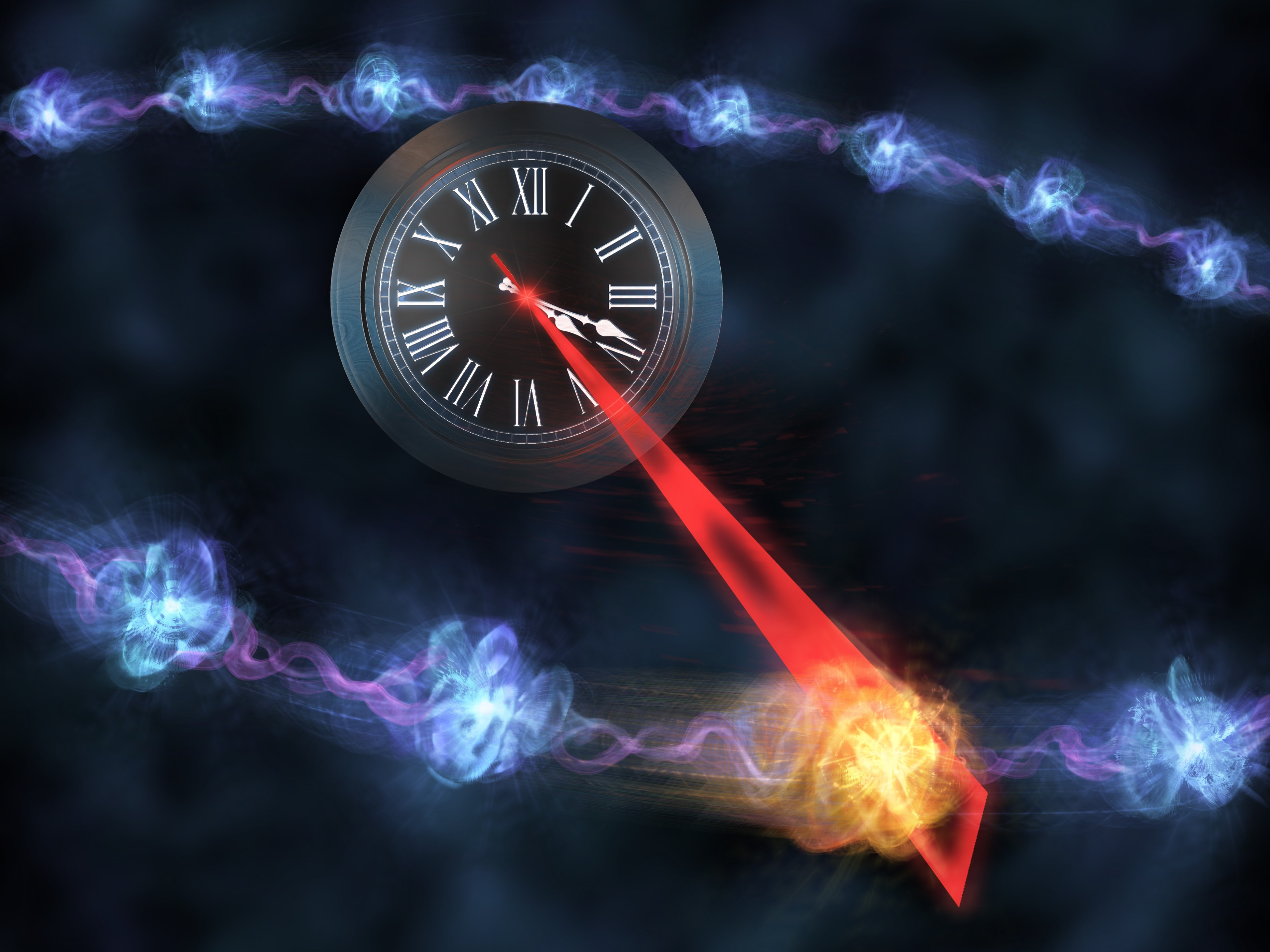Discovering a new quantum clock
Published in Physics

Scientific innovation can't be forced, but it is certainly possible to create an environment that facilitates and encourages it. One such occasion was the Quantum Thermodynamics Conference (QTD) 2023 in Vienna, Austria, where this project also started. It was the first edition of QTD that took place in person, and hundreds of participants from all over the world came to Vienna to share their breakthroughs from the preceding years. Back then, I was less than one year into my PhD, so while I didn't have much to present, I went to the conference to immerse myself in the talks, and to catch up with collaborators that I would otherwise only rarely see in person.
Finding the theory for the experiment
One such collaboration was between the TU Wien and Chalmers University of Technology as part of a European consortium called ASPECTS. Our goal was to build a minimal, microscopic quantum clock with the intention of exploring the most energy-efficient way of timekeeping. The Chalmers team, led by Simone Gasparinetti and with PhD student Simon Sundelin, planned to use their expertise in the superconducting qubit platforms to realize such a clock.
Our Vienna-based team—led by Marcus Huber, with Paul Erker and myself—set out to develop a theoretical framework for such an energy-efficient clock. We shall spare you, dear reader, the intricate details, but to summarize: as theoreticians, we believed that a small system would offer the most promising foundation for a quantum clock. Such a clock would work by being supplied with energy that charges up the system. Once it is fully charged, it releases all the energy at once as a 'tick'. Supplying more energy improves the performance of such a clock; in other words, the ticking becomes more accurate. This was also the predominant belief in the wider theoretical community at the time. To increase the accuracy of a clock, the energy the clock dissipates would have to rise at least proportionally. However, our theoretical model would be exceedingly difficult—if not impossible—to realize experimentally, as the Chalmers team repeatedly insisted. And so, to come up with a new, more realistic proposal for their experiment, we set out to meet at the Arbeiterstrandbad (the Worker's Beach, linked page only in German) next to the old Danube on a free afternoon of the QTD conference.
An unexpected discovery
On a sunny afternoon, after we had treated ourselves to some ice cream, we sat down to sketch possible models for a new clock design. The relaxed atmosphere allowed us to think through unconventional and even slightly weird designs without the pressure to produce something immediately concrete. Ultimately, we concluded that the most promising setup for an experiment would involve a ring of many quantum systems instead of just a single one for the clock. Instead of having to charge a single system with a lot of energy, as we theorists might naturally suggest, the idea was to supply a little energy to one system in the ring, and let that quantum of energy travel along the ring to create the ticks. This seemed to be the experimentally most feasible model because the Chalmers team could design such an experiment by arranging many superconducting qubits in a line. While we did not expect such a configuration to be optimal from a theoretical standpoint, it appeared to be a good compromise for a potential experiment.

The next morning, I sat down and ran some preliminary simulations to test whether the idea we came up with the day before could, in principle, work. As expected, what we called the 'ring clock' worked, and by making the ring larger, the accuracy of the clock improved. To my great surprise, however, the clock appeared to consume almost no additional energy as its accuracy increased, directly contradicting what we had previously believed to be universally true: greater accuracy requires greater energy dissipation.
Assembling the team
Puzzled by this behavior, we reconvened the day after to double-check the results and discuss how such an outcome was possible. As the quantum thermodynamics community was still gathered in Vienna for the conference, we enlisted Tony J.G. Apollaro from the University of Malta, an expert in quantum spin chains. This was precisely the theoretical perspective we needed to understand the ring clock. Together, we were finally at a point where we could make sense of the model we had devised, confirming our initial conclusions: the ring clock improves in accuracy while requiring almost no additional energy. Although we remain some distance away from an experimental realization, our attempt to conceive such a quantum clock has helped challenge a long-standing belief among theorists.
After the conference, the journey of the project moved onward, with Yuri Minoguchi also from TU Wien joining the effort and bringing in fresh ideas to theoretically model the system. With the team finally assembled, we had all the expertise needed to tackle the problem. What followed were nearly two more years of rigorously exploring the topic, writing, and then moving through the review process. Now, with our work at last published, and summer arriving in Vienna, I find myself once again in that familiar, relaxed state—perhaps soon with ice cream in hand—waiting for the next curious idea to take shape, and for the next adventure in research to begin.
Follow the Topic
-
Nature Physics

This journal publishes papers of the highest quality and significance in all areas of physics, pure and applied.
Ask the Editor – Space Physics, Quantum Physics, Atomic, Molecular and Chemical Physics
Got a question for the editor about Space Physics, Quantum Physics, Atomic, Molecular and Chemical Physics? Ask it here!
Continue reading announcement





Please sign in or register for FREE
If you are a registered user on Research Communities by Springer Nature, please sign in